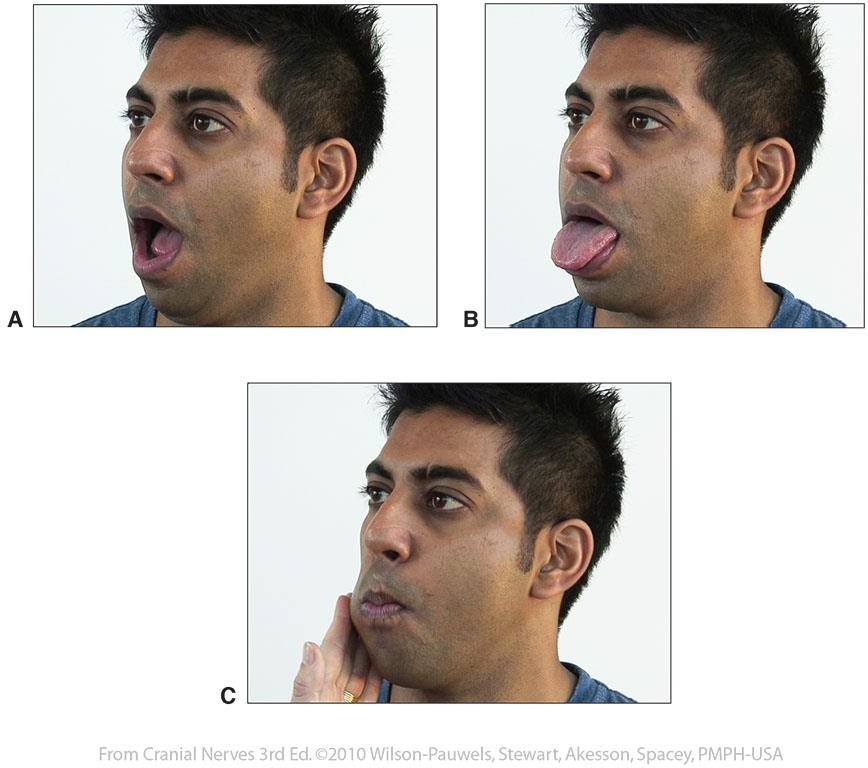A nurse is collecting data about cranial nerve function from an adult client. Which of the following images depicts the method the nurse should use to check the function of the hypoglossal cranial nerve (XII)?
Image A
 |
B.
C.
Image B

Image C

Image D

Image A
Image B
Image C
Image D
The Correct Answer is A
A. The hypoglossal nerve is tested by checking for tongue deviation.
B. This action tests the facial nerve
C. This action tests the trigeminal nerve
D. This action tests the spinal accessory nerve
Nursing Test Bank
Naxlex Comprehensive Predictor Exams
Related Questions
Correct Answer is A
Explanation
A. This response acknowledges the client's concerns and opens the conversation for the nurse to address the client's specific needs and preferences, which is crucial in end-of-life care.
B. While pain management is important, addressing the client's concerns about the end-of-life care and their expectations should be the priority.
C. While family visits are significant, addressing the client's immediate concerns about their care takes precedence.
D. Spiritual support is important but may not address the client's immediate concerns about the care they will receive as death approaches.
Correct Answer is ["12.5"]
Explanation
To calculate the correct dosage, first convert the child's weight from pounds to kilograms. The child weighs 55 lb, which is approximately 55 ÷ 2.2 = 25kg
The prescribed dose is 50 mg/kg/day, so for a 25 kg child, this would be 25 kg × 50 mg = 1250 mg/day.
Since this is divided into 4 equal doses, each dose would be 1250 mg ÷ 4 = 312.5 mg. 125mg= 5ml
312.5mg= 312.5X5/125
=12.5ml
Therefore, the nurse should administer 12.5 mL per dose.
Whether you are a student looking to ace your exams or a practicing nurse seeking to enhance your expertise , our nursing education contents will empower you with the confidence and competence to make a difference in the lives of patients and become a respected leader in the healthcare field.
Visit Naxlex, invest in your future and unlock endless possibilities with our unparalleled nursing education contents today
Report Wrong Answer on the Current Question
Do you disagree with the answer? If yes, what is your expected answer? Explain.
Kindly be descriptive with the issue you are facing.
